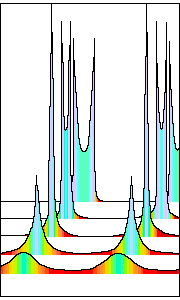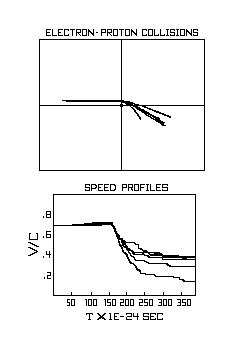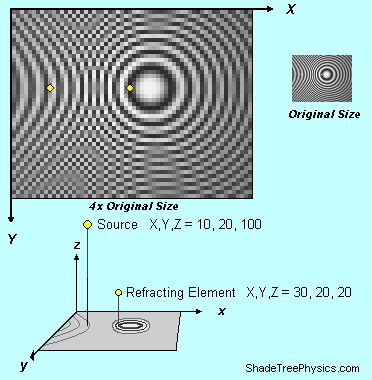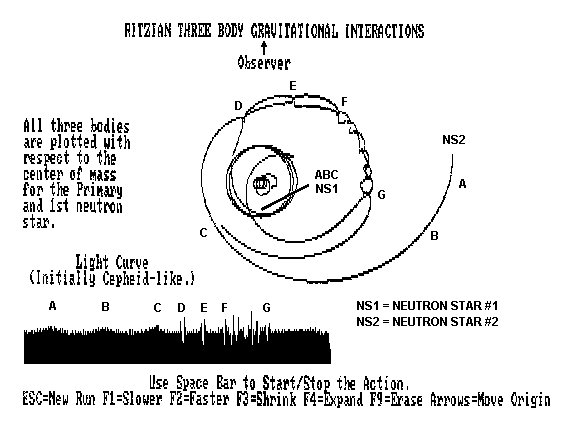When running the programs online you can get a full-size display by right clicking on the square box in the upper right hand corner of your browser screen. It helps to exit the program using menu instructions. Usually this means hitting the ESCape key.
ANT-PAT - Program models antenna patterns for vertically stacked dipole antennas. User may select transmit power (in watts), number of driven elements (1-4), spacing between dipole centers, desired receiver power (in dbm), horizontal range (in miles), etc.
ANT-PAT.BAS
D-CEPHEI -
- Program models Sekerin's "rework" of de Sitter's binary star c+v refutation
hypothesis. The reworked hypothesis predicts that close binary stars
in non-extinction environments can produce the light and apparent radial
velocity curves for Cepheid variables, Catalysmic Variables, Pulsars and
Gamma-Ray Bursts.
D-CEPHEI.BAS

Ritzian c+v Light Curves
See: A Ritzian Interpretation of Variable Stars and Cepheid Variables.
ELECTRON -
Program models Stochastic
electron-proton encounters and demonstrates anisotropic braking
action of bremsstrahlung.
ELECTRON.BAS

Electron-Proton Collisions and
Electron Speed Profiles
See: Emission-Absorption-Scattering (EAS) Sub-quantum Physics
HOLOGRAM -
Program simulates a light source and up to seven refracting bodies in a linear array
that are used to create holographic images on a pretend sheet of film.
HOLOGRAM.BAS
- Note: There's a problem with
coefficient of refraction, Option (e)

Hologram for Single Point Refraction
O-GEM
Program simulates three body interactions to model mode shifting of a
multiple star system which initially presents a Cepheid-like light
curve, which then catastrophically transitions to an temporarily non-variable
state. Program uses Ritzian relativity to produce the transitional light
curve which the author claims is similar to that of GRB790731.
O-GEM.BAS

TRIBODY simulation of omega Geminorum as a source for GRB 790731
TRIBODY -
Program simulates three different n-body scenarios. Bird's eye view allows you to
watch the bodies interact gravitationally.
TRIBODY.BAS